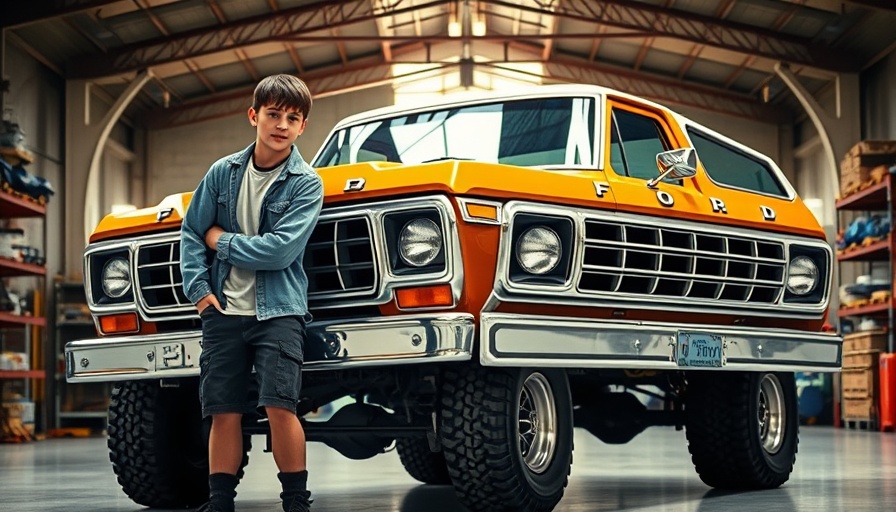
Transforming Budget Constraints into Off-Road Capability
In the world of off-roading, enthusiasts often perceive the sport as an expensive hobby fueled by flashy rigs and costly modifications. Yet, Adam Lovell’s journey with a $800 Ford Ranger proves that ingenuity can surpass expense. The basic premise? With creativity and resourcefulness, it's entirely feasible to build a rugged off-road vehicle without ruining your finances.
A Clever Blend of Old and New Engineering
Adam's 1992 Ford Ranger symbolizes a union between innovative engineering and classic design. By utilizing parts from junkyards and salvaging components from vintage Ford vehicles, Adam has managed to formulate a robust trail-ready truck. The front axle is salvaged from a 1977 Ford F-150, while the rear comes from a 1981 model. Such creative sourcing not only saves costs but exhibits the potential that exist when old meets new.
The suspension system is equally impressive, filled with repurposed parts, including rod ends taken from Adam’s dad’s Ultra 4 race car, showcasing a family influence and a shared passion for off-roading. One of the quirkiest components is the tie rod, creatively fashioned out of a grind rail once used for BMX biking—a clear testament to Adam’s ability to transform everyday items into functional components.
Functional Simplicity Over Complexity
Despite extensive modifications to the chassis, Adam chose not to fiddle with the engine or transmission. “It’s just a stock truck,” he affirms, highlighting that sometimes simplicity is the key to reliability. This philosophy also speaks volumes about his trust in the original design; factory parts are engineered for cohesive functionality.
Interestingly, the only issue encountered was a simple fix with the clutch safety switch—a minor blip in an otherwise effectively executed build. The aim was clear; Adam wanted a vehicle that could handle rough terrains without the intricacy of high-maintenance modifications.
Creating a Trail Warrior: Practical Modifications
The interior of the Ranger remains stripped down but functional. Replaced with a bucket seat from the junkyard, it retains comfort while enhancing safety with a roll cage and a communication system. This focus on maintaining a functional driver experience lends practicality to Adam’s choices, proving that budget builds can still prioritize safety and usability.
A Cost-Effective Off-Road Solution for Enthusiasts
What Adam Lovell demonstrates is that building a capable off-road rig doesn’t have to come at a steep price. His experience provides insights valuable to both budding enthusiasts seeking thrills on a budget and individuals considering modifications to their own vehicles. The successful transformation of a humble Ford Ranger showcases how determination, creativity, and the right resources can defy conventional expectations.
Advocating for Budget Builds in Off-Roading
Lovell's journey should resonate with a broad audience, particularly those who might assume that off-road capabilities are only accessible to those with deep pockets. By showing that practical, inventive approaches can lead to extraordinary results, he encourages others to embrace the notion of DIY modifications—alterations that are not only functional but also personal and unique.
Conclusion: Embrace the Challenge
For off-road enthusiasts, Adam Lovell's $800 Ford Ranger represents a paradigm shift in how one approaches building a trail rig. It champions the idea that both capability and creativity can thrive within a budget. If you are sitting on the sidelines, pondering whether a budget build is worth your effort, think again—look to Adam’s story for inspiration. True freedom lies in exploration, and with enough grit and ingenuity, anyone can embark on their off-roading journey without a hefty price tag.
 Add Row
Add Row  Add
Add 




Write A Comment